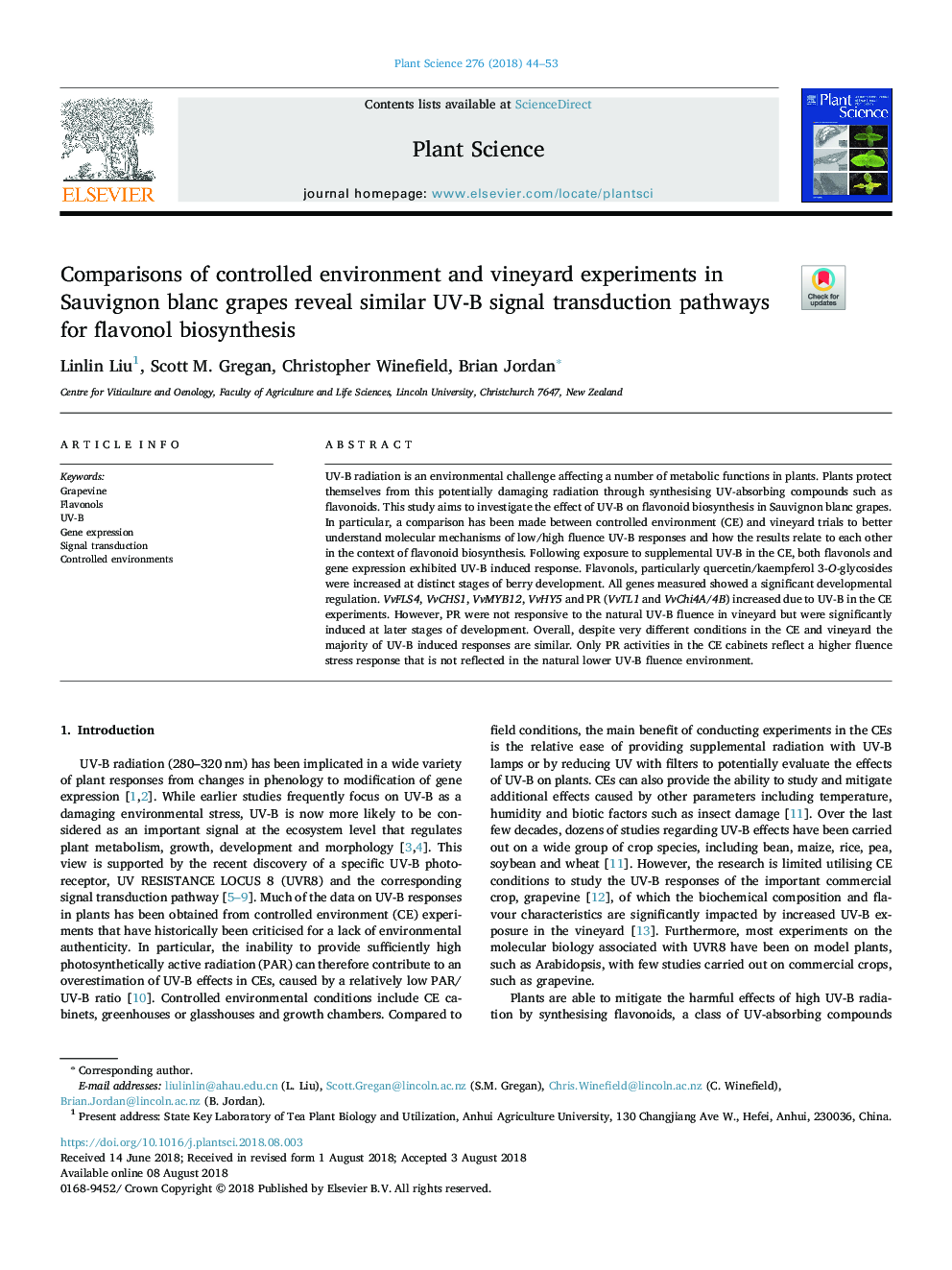| Article ID | Journal | Published Year | Pages | File Type |
|---|---|---|---|---|
| 8356079 | Plant Science | 2018 | 10 Pages |
Abstract
UV-B radiation is an environmental challenge affecting a number of metabolic functions in plants. Plants protect themselves from this potentially damaging radiation through synthesising UV-absorbing compounds such as flavonoids. This study aims to investigate the effect of UV-B on flavonoid biosynthesis in Sauvignon blanc grapes. In particular, a comparison has been made between controlled environment (CE) and vineyard trials to better understand molecular mechanisms of low/high fluence UV-B responses and how the results relate to each other in the context of flavonoid biosynthesis. Following exposure to supplemental UV-B in the CE, both flavonols and gene expression exhibited UV-B induced response. Flavonols, particularly quercetin/kaempferol 3-O-glycosides were increased at distinct stages of berry development. All genes measured showed a significant developmental regulation. VvFLS4, VvCHS1, VvMYB12, VvHY5 and PR (VvTL1 and VvChi4A/4B) increased due to UV-B in the CE experiments. However, PR were not responsive to the natural UV-B fluence in vineyard but were significantly induced at later stages of development. Overall, despite very different conditions in the CE and vineyard the majority of UV-B induced responses are similar. Only PR activities in the CE cabinets reflect a higher fluence stress response that is not reflected in the natural lower UV-B fluence environment.
Related Topics
Life Sciences
Agricultural and Biological Sciences
Plant Science
Authors
Linlin Liu, Scott M. Gregan, Christopher Winefield, Brian Jordan,
